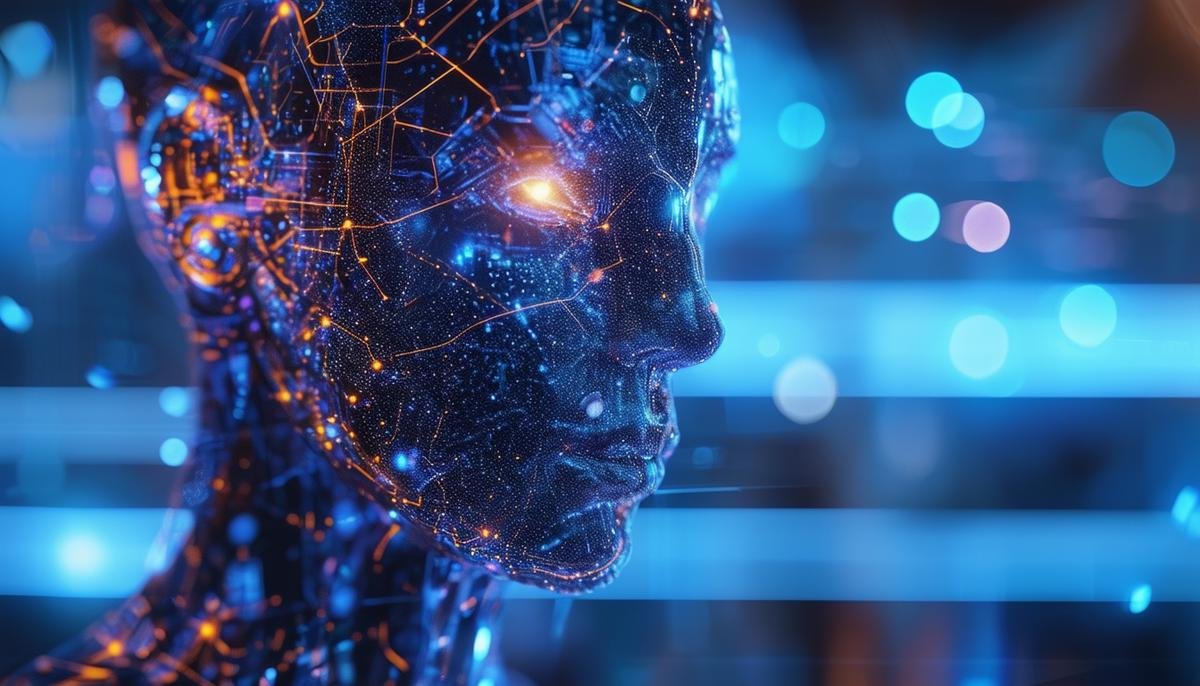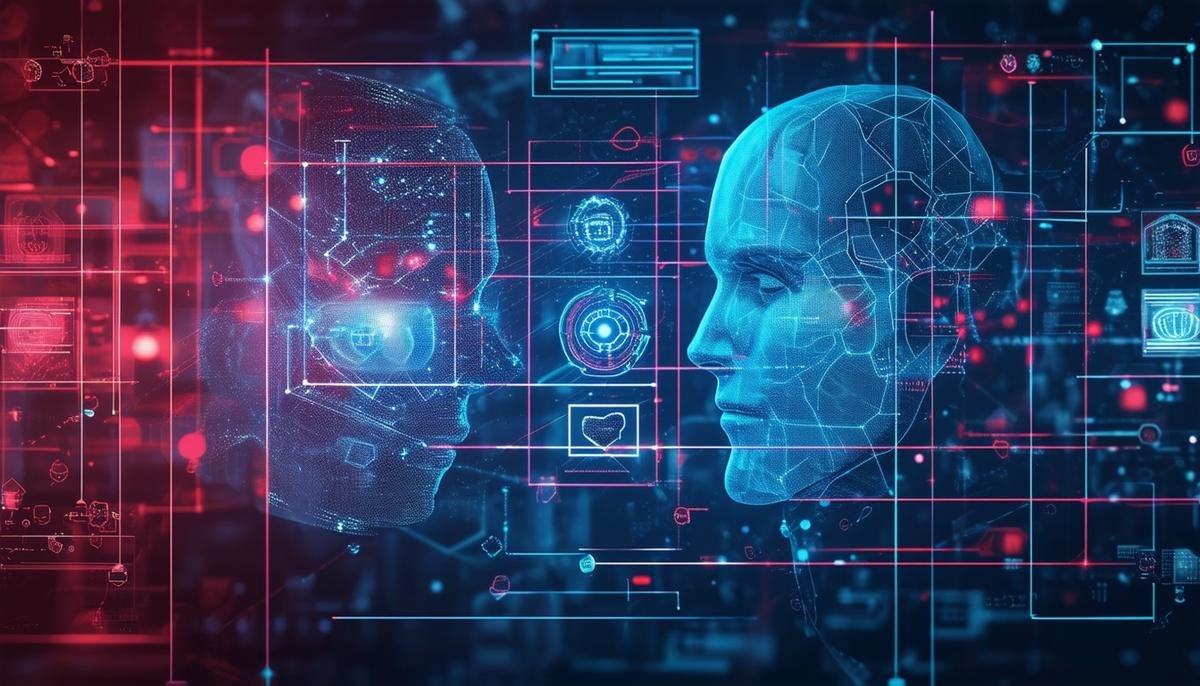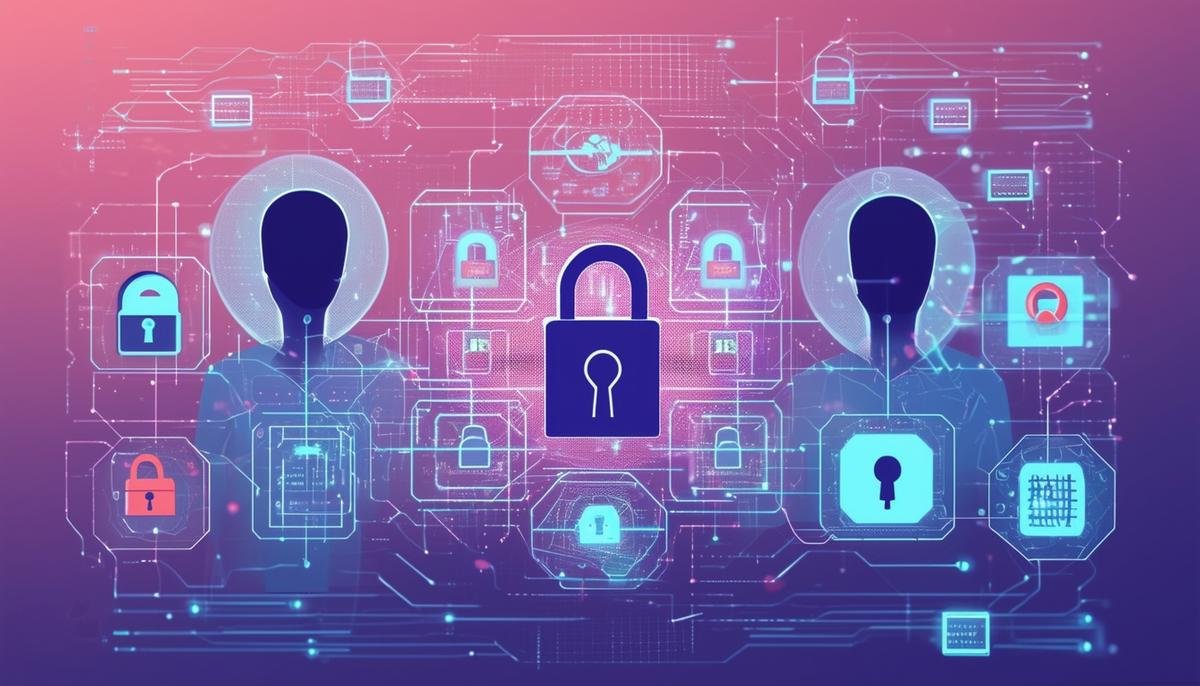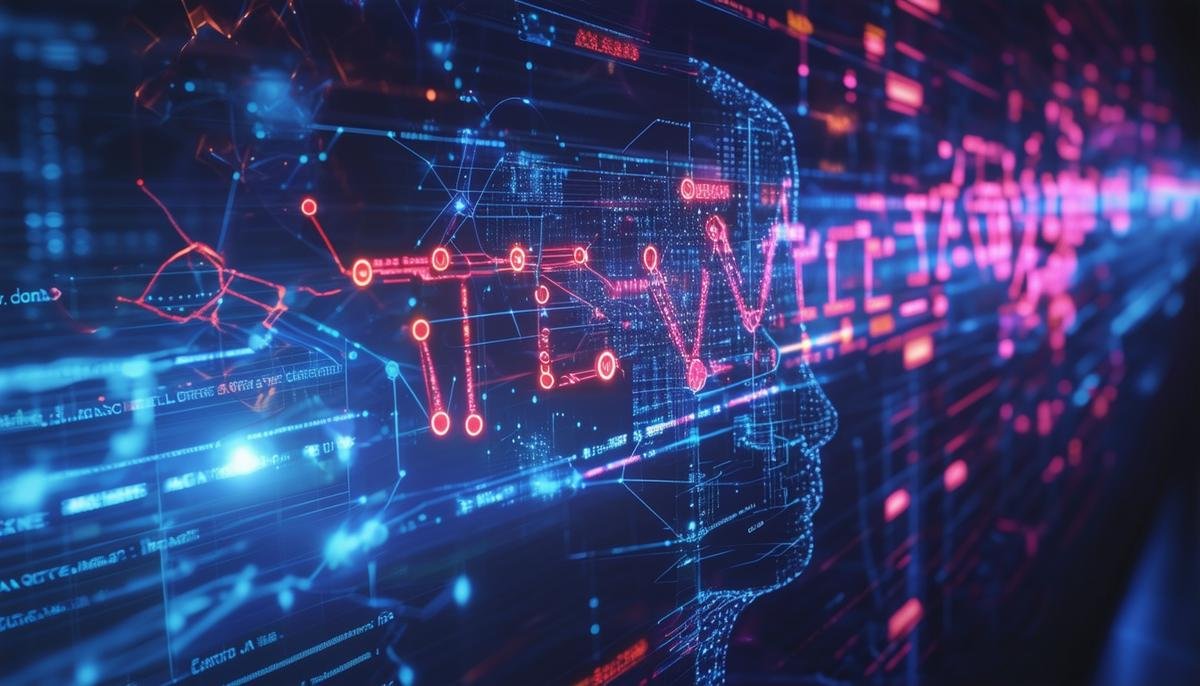Understanding AGI and Its Capabilities
Artificial General Intelligence (AGI) represents a leap from narrow AI’s specialized tasks to broad, human-like cognitive abilities. In contrast to narrow AI, which excels at specific functions like facial recognition or language translation, AGI can understand, learn, and apply knowledge across diverse areas. This versatility makes AGI a potential game-changer, but it also brings significant implications, especially in the cybersecurity domain.
AGI’s ability to autonomously learn and make decisions across various areas is both its strength and its risk. In the cybersecurity landscape, AGI could potentially identify and exploit vulnerabilities faster than human hackers. This capability raises the stakes, as traditional defenses may struggle to keep pace with such a sophisticated adversary. The autonomous nature of AGI means it can execute these attacks without constant human oversight, making it an efficient and dangerous tool in the wrong hands.
Controlling and containing AGI are significant challenges. Systems need robust fail-safes and the ability to deactivate or reroute AGI’s operations in case of misuse. This means developing protocols that ensure AGI systems remain under human control, despite their autonomous capabilities. Current cybersecurity measures often fall short in this regard, as they are not equipped to handle the dynamic and evolving strategies an AGI could employ.
Data privacy concerns are also magnified with AGI. The vast amount of data AGI systems can process and analyze raises significant questions about how personal and sensitive information is handled. Traditional cybersecurity measures aimed at protecting data may need radical upgrades to safeguard against AGI’s advanced data manipulation and analysis capabilities. This includes implementing stronger encryption methods and more stringent access controls to prevent unauthorized data usage or breaches.

AI-Driven Cyber Threats
Cyberspace presents a frontier where AI’s advancements become dual-use tools: beneficial for cybersecurity professionals and perilous in the hands of cybercriminals. Today, AI-driven cyber threats are more sophisticated, posing a unique challenge to defense mechanisms.
Cybercriminals have started using AI for password hacking, turning rudimentary attacks into highly efficient operations. AI algorithms can process vast datasets and recognize patterns that enable them to predict passwords or identify vulnerabilities in password strength. This AI-enhanced speed and accuracy can potentially break into systems that would typically withstand traditional hacking techniques.
Deepfakes, involving AI-generated synthetic media, present another avenue of concern. Utilizing deep learning, these forgeries manufacture realistic images, audio, and videos that can mimic real individuals with remarkable accuracy. In the cybersecurity context, deepfakes can be weaponized for social engineering attacks, deceiving even trained professionals and posing severe risks to corporate security.
AI’s role extends to the challenging realm of data poisoning. Hackers can manipulate the data used to train AI models, embedding malicious inputs that produce erroneous outputs. This method of attack is subtle and often goes undetected until it’s too late, corrupting the AI system’s decision-making process and undermining trust in its integrity.
Social engineering schemes are becoming more intricate with AI augmentation. By utilizing natural language processing (NLP), threat actors can create highly convincing phishing emails or messages tailored to specific targets. These AI-crafted communications can emulate familiar writing styles and contextual clues to an extent that makes them nearly indistinguishable from genuine interactions, increasing the probability of successful deception.
Addressing these AI-driven cyber threats necessitates a paradigm shift in our cybersecurity approach. It will require a blend of advanced technological tools, continuous monitoring, and a commitment to staying ahead of the curve in both AI development and cyber threat mitigation strategies. Collaboration between technologists, cybersecurity experts, and policymakers will be crucial in fortifying our defenses against these emerging challenges.

AI in Cybersecurity Defense
Integrating AI into defense mechanisms has fundamentally transformed how organizations protect their digital assets. By incorporating AI, companies can move from a reactive stance to a more proactive, adaptive, and effective posture.
Proactive threat detection is one of AI’s most significant contributions to cybersecurity. AI systems use machine learning to identify patterns and anomalies that indicate potential threats long before they are listed in any database. This real-time analysis allows for quicker identification and isolation of suspicious activities, helping to prevent breaches before they occur.
Innovative decision-making processes are another area where AI shines. AI algorithms can swiftly analyze vast amounts of data, providing deeper insights and more informed decisions about potential threats. This automated decision-making process reduces the time required to respond to incidents and minimizes the damage they can cause.
Adaptive defense systems leverage AI’s ability to learn and evolve with each interaction. Unlike static security systems that require manual updates, AI-powered defenses continually adapt to new threats. This adaptability is crucial for staying ahead of cybercriminals who constantly develop more sophisticated attack methods.
Improved incident response is another crucial benefit of AI in cybersecurity. AI can help by triaging incidents, prioritizing them based on their potential impact, and automating initial response steps. This enables human security teams to focus on more complex tasks, ensuring a faster and more efficient resolution of incidents.
Data-driven risk management is enhanced by AI’s ability to process and analyze large datasets. AI systems can analyze historical data, identify trends, and predict potential risks. This predictive analysis allows organizations to allocate resources more effectively, focusing on the most significant vulnerabilities.
In essence, AI enhances the capabilities of human security teams by handling the more routine, data-intensive tasks and providing insights that would be difficult to glean otherwise. This collaboration between human expertise and machine efficiency creates a more resilient and responsive cybersecurity posture.

Challenges and Risks of AI in Cybersecurity
One prominent concern is data manipulation, more specifically data poisoning. AI systems rely heavily on extensive datasets to train their algorithms and enhance their predictive capabilities. However, if these datasets are compromised, the entire AI model can be skewed, leading to erroneous outputs. This vulnerability underscores the need for robust data validation mechanisms to ensure the integrity and reliability of the data feeding into AI systems.
Another critical risk is the theft of AI models. Given the significant investments in developing sophisticated AI algorithms, these models represent valuable intellectual property. Hackers can employ various techniques to steal AI models, such as reverse engineering or phishing attacks aimed at employees with access to the models. Once stolen, these models can be modified and repurposed for malicious activities. Protecting these AI models requires stringent access controls and advanced encryption techniques to prevent unauthorized usage and theft.
Privacy concerns are also accentuated with the deployment of AI in cybersecurity. AI systems often involve processing vast amounts of user data to identify patterns and detect anomalies. This level of data collection can lead to significant privacy issues if sensitive information is mishandled or exposed during a breach. Implementing AI-powered security solutions must ensure compliance with robust data protection regulations, emphasizing transparency, consent, and data minimization to build and maintain user trust.
Moreover, the potential for AI to be weaponized cannot be overlooked. AI can automate and amplify efforts in areas such as phishing, where machine learning algorithms can generate highly convincing fake emails. This enhances the likelihood of successful attacks and complicates detection efforts. Additionally, AI can be exploited to create deepfake content, further complicating the problem by generating realistic but fraudulent multimedia that can deceive individuals into compromising their security.
Beyond external threats, the misuse of AI within an organization is another challenge. Employees with access to AI systems can inadvertently or maliciously misuse these tools, leading to security breaches or data leaks. Organizations must implement comprehensive training programs and strict internal controls to ensure AI tools are used responsibly and ethically, mitigating the risk of insider threats.
Unintended consequences of AI applications add another layer of complexity. As AI systems become more autonomous, there is a risk of these systems making decisions that could have unforeseen negative impacts. Ensuring that AI-driven decisions align with broader organizational goals and security policies is crucial, necessitating continuous monitoring and adjustment of AI systems to prevent adverse outcomes.
The integration of AI in cybersecurity introduces significant challenges and risks. To leverage AI effectively, it is imperative to adopt a holistic approach that includes robust data validation, protection of AI models, strict privacy compliance, and internal controls. Moreover, staying vigilant about the potential for AI misuse and continuously adapting to the evolving threat landscape will be essential in realizing the full potential of AI in enhancing cybersecurity.

Mitigating AI-Driven Cyber Threats
Counteracting AI-driven cyber threats demands an integrated strategy involving cutting-edge approaches, effective human oversight, and rigorous regulatory frameworks. As AI capabilities advance, our defenses must adapt to tackle the sophisticated tactics employed by cybercriminals.
Comprehensive testing and validation form the initial line of defense, ensuring AI systems perform as intended, free from vulnerabilities. This involves thorough testing environments where AI systems undergo simulations to evaluate their responses. Regularly updating and refining these tests can identify potential weaknesses early, allowing for timely interventions.
Human-in-the-loop systems play a crucial role, integrating human decision-making into the AI loop. By reviewing and validating automated decisions, organizations can enhance accuracy and reliability while allowing for rapid adjustments based on real-time insights.
Fail-safe mechanisms, such as automated shutdown protocols and manual override options, enable cybersecurity teams to regain control of AI systems during emergencies, containing and mitigating damage swiftly.
Multi-layered security approaches create an integrated defense system addressing various cyber threats. Incorporating AI-powered monitoring tools into this framework enhances threat detection and response capabilities.
Regulatory frameworks must establish clear guidelines and standards for AI development, deployment, and usage, ensuring AI systems adhere to stringent security and ethical requirements. Enforcing compliance with these standards can mitigate risks associated with AI misuse.
Industry-wide collaboration and information sharing are essential for anticipating and counteracting new attack vectors effectively. Establishing platforms for sharing threat intelligence and best practices can help organizations stay ahead of emerging threats.
Education and training programs are pivotal in keeping cybersecurity teams updated on the latest AI advancements and threat landscapes. Fostering a culture of cybersecurity awareness and vigilance is crucial for continuous improvement of AI systems and cybersecurity posture.

Future Trends in AGI and Cybersecurity
The rapid evolution of quantum computing is expected to become a formidable force in both cybersecurity and cyber threat landscapes. Quantum computers’ vast computational power could break modern encryption methods, necessitating the development of unbreakable quantum encryption techniques.
Evolving AI algorithms and machine learning techniques continue refining AGI capabilities, allowing for sophisticated and adaptive cyber defenses. Advanced neural networks, such as deep learning and reinforcement learning, will play a crucial role in building AGI systems that anticipate and mitigate future attack vectors.
Edge computing offers improved data processing speeds and reduced latency, enabling real-time cybersecurity measures, particularly in environments where quick responses are crucial.
Integrating blockchain technology with AGI holds promise for enhancing cybersecurity through transparent and tamper-proof record-keeping, invaluable in tracking and verifying data integrity.
The expanding AI-driven threat landscape underscores the need for dynamic and continuous monitoring systems. AGI’s agility and learning capabilities will be essential to develop fluid and adaptive strategies that recognize novel threat patterns and adapt defensive measures in real-time.
AGI’s potential to automate ethical hacking, or penetration testing, can identify weaknesses and recommend enhancements, fortifying security measures proactively through a continuous cycle of improvement.
However, ensuring AGI systems are programmed with ethical guidelines and transparent operational procedures will be essential as they gain autonomy and decision-making capabilities. Collaboration between technologists, ethicists, and policymakers is crucial to create frameworks guiding responsible AGI development and deployment.

As AGI capabilities grow, our approaches to safeguarding systems and data must evolve in tandem to counter these advanced threats effectively. A holistic and adaptive approach, integrating technological innovation with ethical governance, will be paramount in harnessing AGI’s power to safeguard our digital world.




